
Alternatives to Horseshoe Crab (Limulus polyphemus) as Bait for the Channeled Whelk (Busycotypus canaliculatus) Trap Fishery
This study evaluated alternative ingredients to using horseshoe crabs in channeled whelk bait, first in the laboratory and then in the field, partnering with commercial whelk fishermen. Learn more

Daily Catch and Activity Rhythms of Channeled Whelk (Busycotypus canaliculatus) in the Field and Laboratory
This study explored channeled whelk activity using timelapse filming in the field and accelerometers in the lab. We found that whelks likely possess a circadian clock that plays a role in controlling their patterns of locomotion, but prevailing environmental cues also impact their activity and catchability in baited traps. Learn more
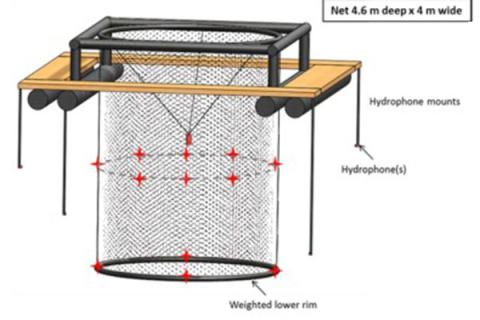
Field measurements of steelhead trout Oncorhynchus mykiss distribution, swimming behavior and response to water current exposure in a sea cage
This study demonstrates the use of acoustic telemetry to study fish behavior in a cage experiencing tidal currents. This technology can be applied to commercial scale cages to improve fish welfare and cage design. Learn more
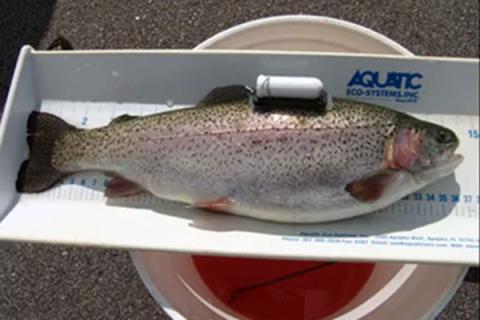
Feasibility and challenges of submerged culture of steelhead trout Oncorhynchus mykiss for open ocean aquaculture in the United States
Three experiments were developed to explore the ability of O. mykiss to cope with extended periods of submergence. Data storage tags (DST), sonar and video were used to quantify their ability to manage with submergence. Results indicated differences in growth, condition, and mortality among the treatments. Learn more
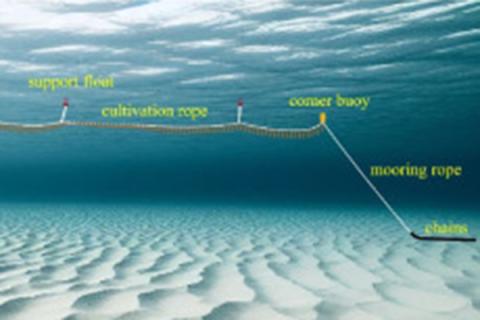
Hydrodynamic modeling of kelp (Saccharina latissima) farms: From an aggregate of kelp to a single line cultivation system
The objectives of this study are to develop a numerical model for a typical kelp longline system deployed in the Gulf of Maine, US and validate the model from an aggregate of kelp blades to a whole longline system with laboratory and field data in Fredriksson et al., respectively. Learn more
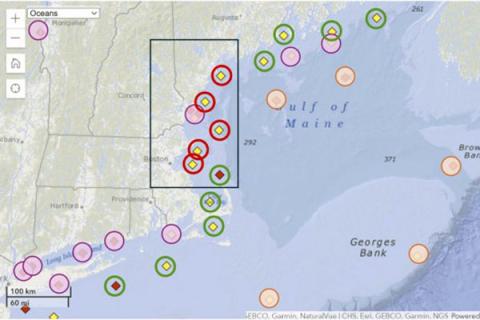
Design considerations for a continuous mussel farm in New England Offshore waters. Part I: Development of environmental conditions for engineering design
By examining the extreme wave and current conditions in New England offshore waters using analytical and numerical modeling approaches, this research provides useful information to future researchers to navigate the basic challenges of the offshore aquaculture industry in the New England region contributing to the sustainable growth of this vital industry. Learn more
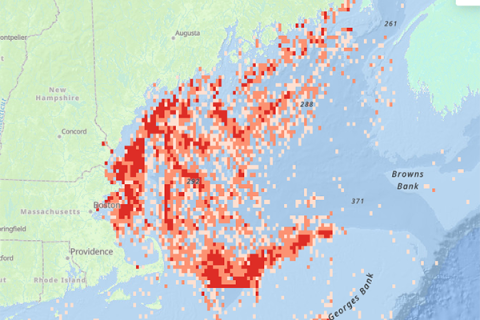
Lumpfish, Cyclopterus lumpus, distribution in the Gulf of Maine, USA: observations from fisheries independent and dependent catch data
This study was funded by NH Sea Grant to document wild lumpfish populations over time and in conjunction with a warming ocean. It is important to know about wild lumpfish dynamics if they are to be harvested in US waters for use as a cleaner fish in salmonid farms. Learn more
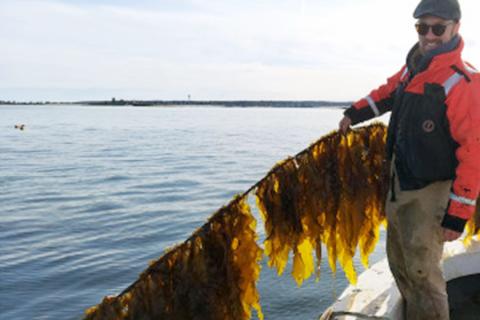
Evaluation of an experimental kelp farm’s structural behavior using regression modelling and response amplitude operators derived from in situ measurements
An experimental kelp farming system for exposed ocean conditions was designed, deployed, planted with kelp and instrumented for evaluation of its dynamic response to ocean waves, tides, and currents. Learn more

Tolerance of juvenile lumpfish (Cyclopterus lumpus) to high rearing densities
Lumpfish can be used as cleaner fish to remove naturally occurring parasites from salmonids, like steelhead trout. We strive to improve lumpfish production in the hatchery for this purpose. This publication details a study showing the effects of rearing lumpfish in varying densities. Learn more
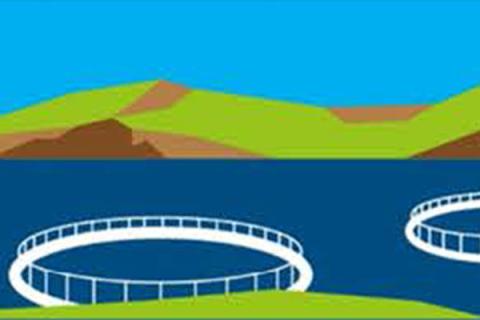
Resolving the term “offshore aquaculture” by decoupling “exposed” and “distance from the coast”
The terms “offshore” and “open ocean” have been used to describe aquaculture sites that are further from the coast or in higher energy environments. Neither term has been clearly defined in the scientific literature nor in a legal context, and the terms are often used interchangeably. Learn more
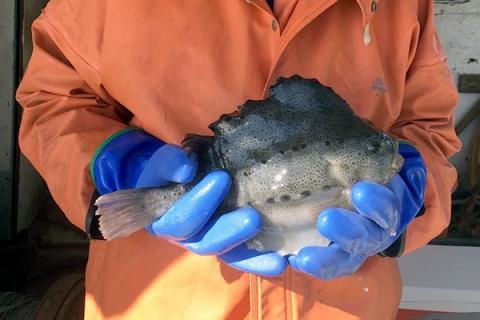
Effects of light and density in rearing Lumpfish (Cyclopterus lumpus)
While lumpfish are proven cleaner fish and eat parasites in salmonid farms, in the hatchery, they sometimes eat each other. We manipulated lighting and fish density in the hatchery to provide lumpfish growers with guidelines to minimize aggressive fish behavior. Learn more
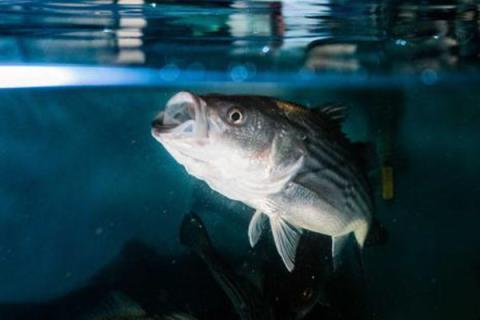
Combinatorial metabolomic and transcriptomic analysis of muscle growth in hybrid striped bass
This collaboration between UNH (Prof. David Berlinsky and Dr. Linas Kenter) and the “StriperHub” focused on a prevalent issue in commercial aquaculture of why some fish grow fast and some grow slow. Results demonstrated novel insights into the molecular regulation of growth pathways not only important for finfish aquaculture but also broader vertebrate physiology. Learn more
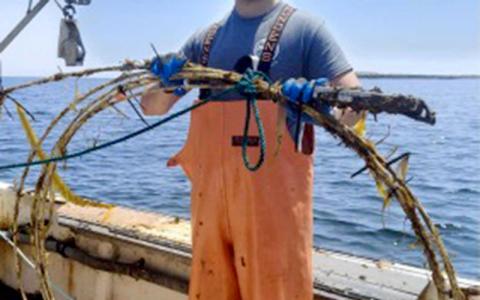
Design, Deployment, and Operation of an Experimental Offshore Seaweed Cultivation Structure
This project was funded by the DOE MARINER program to develop technologies that enable large scale macroalgae cultivation for the purpose of generating material for human food, animal feed and biofuel. Learn more

Laboratory investigations into alternative baits for the channeled whelk (Busycotypus canaliculatus) fishery
Channeled whelk are fished commercially along the US Atlantic seaboard but the fishing industry relies on baits containing horseshoe crabs, an unsustainable ingredient. This publication details a laboratory study in which we created and tested baits composed of invasive species and other low-cost ingredients and found possible alternatives to horseshoe crabs. Learn more
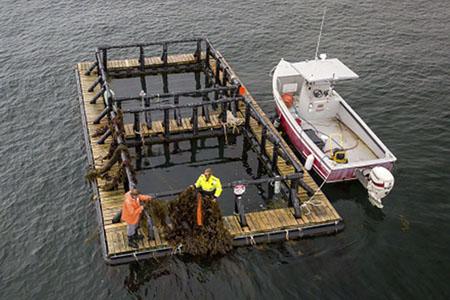
Integrated multi-trophic aquaculture of steelhead trout, blue mussel and sugar kelp from a floating ocean platform
Our CSSS integrated multi-trophic efforts are always ongoing. This publication details how we can benefit the coastal environment and the seafood community utilizing this innovative approach to aquaculture. Learn more
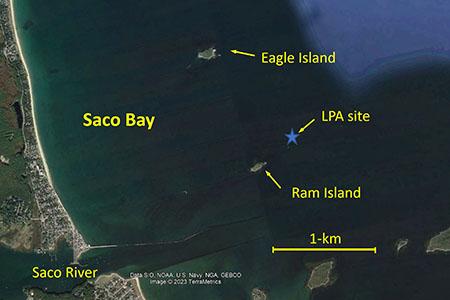
Mooring tension assessment of a single line kelp farm with quantified biomass, waves, and currents
Kelp farming (Saccharina latissimi) has seen an increase in the Gulf of Maine. This publication details load and tension statistics measured at an experimental site in Saco Bay, ME. These data can ultimately help optimize future farms to produce a healthy kelp product. Learn more